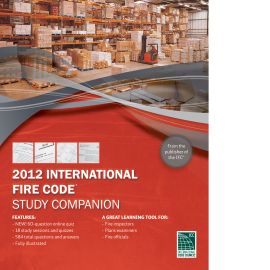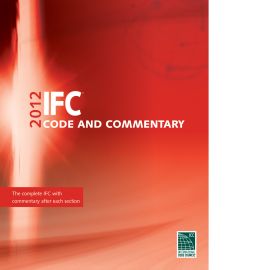pocketINTERPS: 2012 IFC
This handy pocket guide has a compilation of hundreds of real-world questions from real code users answered by ICC code experts. PocketINTERPS: 2012 IFC reviews chapters throughout the International Fire Code and addresses various technical topics including:
• building and fire protection systems
• means of egress
• special hazards including flammable finishes
• motor vehicle fuel dispensing and high-piled combustible storage
• hazardous materials
| Description: Links | |
|---|---|
| Description: | This handy pocket guide has a compilation of hundreds of real-world questions from real code users answered by ICC code experts. PocketINTERPS: 2012 IFC reviews chapters throughout the International Fire Code and addresses various technical topics including: • building and fire protection systems • means of egress • special hazards including flammable finishes • motor vehicle fuel dispensing and high-piled combustible storage • hazardous materials PocketINTERPS: 2012 IFC provides answers to questions such as: • What is the relation between the International Fire Code and the International Residential Code for One- and Two-Family Dwellings and does it apply to one- and two-family dwellings? • What is the minimum required separation distance (in feet) and/or fire-resistance rated separation (in hours) for an emergency power generator located adjacent to an exterior wall of a Group R-1 occupancy? • What are the installation requirements if a commercial restaurant decides to add a pizza oven? • How do the pipe hanging and support requirements in Chapter 9 of NFPA 13 comply with the requirements in ASCE 7, Minimum Design Loads for Buildings and Other Structures? • When smoke and heat vents are required for high-piled storage, where is the code requirement that specifies the vent’s opening force? If you have a snow load piled on the vent, what is the opening force required for smoke and heat vents to ensure they actually operate under smoke and fire conditions? • I have a company that wishes to store two-330 gallon portable tanks of 30% hydrogen peroxide inside their building. From the MSDS we understand the material is classified as a Class 2 oxidizer and a corrosive liquid. Table 2703.1.1(1) states the MAQ for Class 2 Oxidizers is 250 pounds. Am I required to make a conversion for liquids and how is it accomplished?
This publication is ideal for code officials, design professionals and regulated industry professionals who want help in understanding the purpose, intent and application of the IFC® provisions. These professionals will appreciate the level of detail and analysis presented in the answers provided within this guide. |
| Pages | 400 |
| Language | English |
| ISBN | 978-1-60983-451-7 |
| Publisher | ICC |
| Author: |
Scott Stookey(bio)
Scott Stookey |
| Code Year | 2012 |






